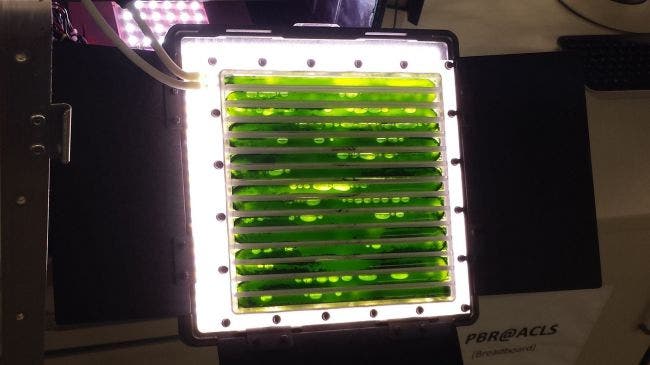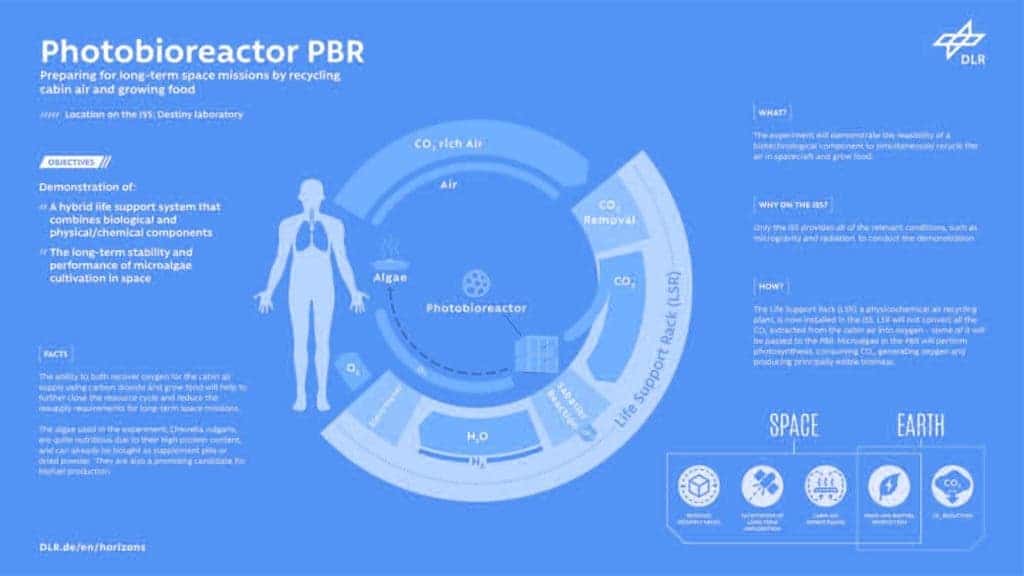As if having a research station in space wasn’t awesome enough — astronauts are now getting a photo-bioreactor which will use algae to produce clean oxygen.

As NASA is tentatively considering deep-space exploration, it’s starting to hit one of the hard limitations on this type of project: the human body. Unlike engines, fuel tanks, or other spacecraft components, the human body is very difficult to tweak. It requires a fixed set of resources without which it just cannot do. Air, water, and food are the most important ones, and ensuring this triad in a long-term space shuttle is not easy.
The ISS is constantly re-equipped with supplies but in order for a long-term mission to succeed, we would need a closed-loop system with recycling and reusing resources. In the case of air, the basic system is simple: we already have an excellent mechanism to recycle oxygen in the form of plants. However, while the principle is pretty clear, implementation has proven quite challenging. However, NASA believes it may have found a solution in the form of a photobioreactor.
This German-made experiment has been flown onto the ISS and experimentation has commenced just this week. The system sucks some of the carbon dioxide and a few other gases from the air, producing methane and water from it, the latter of which is then fed back through the system into an electrolysis process that produces oxygen. The oxygen is then recycled into the cabin.

It’s a clever hybrid system that mixes the algae’s natural chemical abilities with a manmade electrolysis system. This approach works much better than the individual sum of its parts.
“With the first demonstration of the hybrid approach, we are right at the forefront when it comes to the future of life-support systems,” said the exploration and project leader Oliver Angerer in a statement for the German Aerospace Center (DLR).
“Of course, the use of these systems is interesting primarily for planetary base stations or for very long missions. But these technologies will not be available when needed if the foundations are not laid today.”
The key player of this system is Chlorella vulgaris, a green microalgae also used as a protein-rich food additive. The photosynthetic microorganism has a thick cell wall and is overall very resilient, which makes it excellently suited for long-term missions. It only needs light and small amounts of a nutrient solution. In addition, the algae could be consumed for nutrients — something which is not explored in the current experiment but might be possible nonetheless.
For now, the system is not capable of producing sufficient oxygen for the entire ISS crew, but it will serve as a proof-of-concept for larger-scale experiments. Having a self-sustainable oxygen source is crucial for long-term space missions, as well as future base stations on the Moon or on Mars.
Was this helpful?



